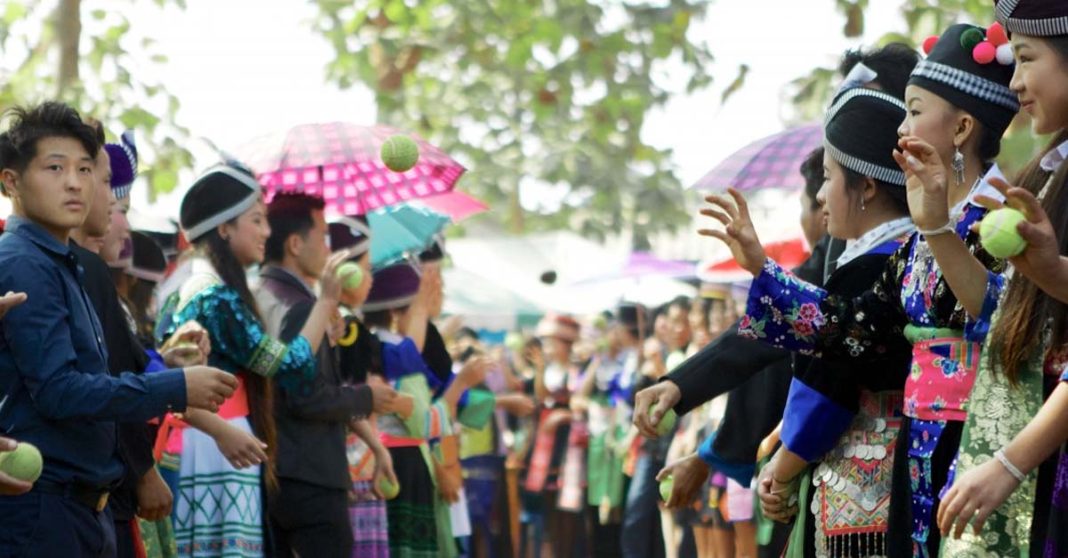Marking the end of the twelfth lunar calendar month, the Hmong ethnic communities are preparing to celebrate the New Year with vibrant festivities that merge religious and cultural significance. This annual ritual, which this year will be held in January, coincides with the completion of the harvest — a time of abundance and appreciation.
Xieng Khouang provincial authorities have already published an official announcement to schedule the Hmong New Year celebrations for 10-13 January and a timetable for the program.
“It depends on the province and the group of tribes,” said Chennoury. “Some celebrate for three to four days; some others gather for a week or even a month – mostly in rural areas I’d say.”
But before diving into fun activities, it is customary to observe traditional practices. The Hmong New Year is renowned for its emphasis on expressing gratitude to family’s ancestors and spirits, signifying a symbolic welcome to a fresh start. Traditional rituals are woven into these beliefs, forming an integral part of the festivities.
Chennoury elaborated on the practice, saying, “We present pigs and chickens as offerings to our ancestors. Through this act, we seek the protection of our ancestors for ourselves and our children.”
Following the completion of the offering practices, the Hmong usher in their New Year with a variety of activities. These include ball tossing, bullfighting, singing contests, football, and Qeej performances, with ball tossing standing out as the most prominent and noteworthy among them.
“Ball tossing is a sport made for partners and lovers, but hey, even friends can get in on the fun,” Chennoury explained the purpose of this activity. She noted that it is for strengthening the bond between two people.
During this fun activity, participants form separate lines based on gender. Facing each other, they toss a small ball, exchanging questions to foster interaction. If the ball is dropped, the tosser invents a fun punishment game for the dropper, adding a playful element to the festivities.
Beyond the array of activities, Chennoury stressed the significance of participants donning their traditional attire. While this may not be a prevalent practice in modern days, it held considerable importance in the past, serving as a symbolic representation of the tribe.
“It’s also an opportunity to show off your costume because, although we belong to the same tribe, we’re not all in the same group, which means each group will have their own uniqueness presented on their attire.”
While the modern era has streamlined the costume-making process, villagers, particularly those in rural areas still rely on the labor-intensive manual crafting linger, with each outfit taking up to a year to complete.
When it comes to the importance of celebrating the Hmong New Year, Chennory said that it is all about keeping the tradition alive.
In her words, “The essence of celebrating the Hmong New Year is a commitment to preserving tradition and honoring the deeds of ancestors.”
A culinary highlight of the celebration is the communal preparation of “Tum Khao Papa.” Dede Channapha, 22, another Hmong from Vientiane Capital, shared insights about this flavorful practice.
The process involves steaming sticky rice, boiling eggs, and wrapping the concoction in banana leaves, creating a dish that transcends mere sustenance, embodying communal spirit and shared heritage.
Dede, reflecting on the familial aspect, emphasized, “It is a chance for the relatives who haven’t seen each other for a long time to finally meet once a year. It’s all about having fun and catching up with the family.”
As the Hmong community eagerly looks forward to 2024, the celebration serves as a cultural anchor, intertwining the past, present, and future in a vibrant tapestry that binds the community in unity and tradition.



